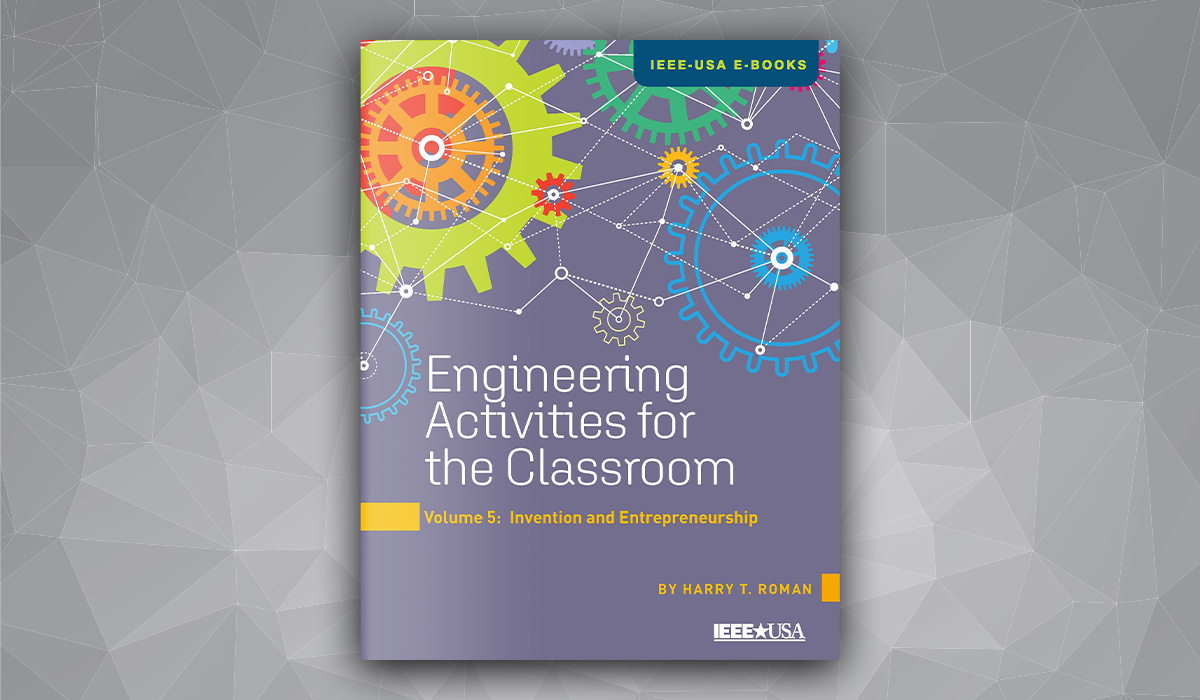E-Book: Engineering Activities for the Classroom – Volume 5: Invention and Entrepreneurship
FREE to Members
Non-Members: $2.99
We are in the midst of a real burst of invention and entrepreneurship, with a growing number of competition weekends for start-up ideas; universities creating incubators to nurture student businesses; and a surge in the number of aspiring entrepreneurs going to business school — or bypassing a college education altogether.
In his fifth IEEE-USA E-Book in the Engineering Activities for the Classroom series, author Harry T. Roman focuses on discussions and activities a teacher (or parent) can use to help spark interest in, and understanding of, inventing and entrepreneurship. Roman makes clear he believes entrepreneurship and inventing go hand-in-hand — inventing should lead to introducing new products into the marketplace.
This book gives teachers questions that can help guide discussion around what is an invention; what is a patent, and why patents are important; the need for finding markets for inventions; business terms of importance; and the fundamentals of launching a new product.
Activities include having students:
- Identify inventors past and present
- Hypothesize what characteristics set entrepreneurs apart from other people in business, or in society
- Identify how the inventing process differs now than in the time of the great U.S. inventor, Thomas Edison
Roman suggests encouraging students to explore why there is a need for patents, and how patents can help or hamper innovation. He also encourages teachers to ask students to monitor their creativity, as well as identify times of the day when they are more creative than others — and postulate as to why this might be so.
The author suggests that student teams be encouraged to look at potential innovation from a multidiscipline approach, and present finished designs orally to other student teams. His list of suggested challenges includes developing ways:
- for a car to generate electricity while parked
- for robots to survey environmentally dangerous dump sites
- for stopping stolen cars without chasing them at high speeds
- for preventing a stolen gun from being fired
A docent/special lecturer at the Edison Museum in New Jersey, Roman understands that Thomas Edison was not just a great inventor but a master entrepreneur — understanding how to turn ideas and inventions into products that can succeed in the marketplace. He writes, “Knowing and understanding the market for one’s new invention, idea, or process is absolutely essential.”
Roman points out that Edison had four cornerstones for getting products to the marketplace:
- Thinking outside of the box
- Taking risks — being entrepreneurial
- Failing your way to success
- Improving your products
One chapter of the book suggests teachers expose the budding entrepreneur to several plans: business, operating, strategic, marketing and communication plans.
Other volumes in this series focus on Telecommunications and Computers, Energy in our World, Engineering, and Robotics. All are available at the IEEE-USA store for free for members. Non-members pay $2.99.
Roman holds 12 U.S. Patents and has received numerous engineering, invention, and teaching awards. He spent 36 years in New Jersey Public Service Electric and Gas’s research and development group; and he has taught graduate-level R&D project management courses at New Jersey Institute of Technology (NJIT). IEEE honored Roman with a Meritorious Achievement Award for developing continuing education products for IEEE members. He currently teaches a graduate course at Montclair State University about applying STEM techniques in the classroom.
Paul Lief Rosengren is the coauthor of In the Time of Covid: One Hospital’s Struggles and Triumphs. He worked for more than three decades in communications at NBC, PSE&G and in state government. He has a Master’s in Public Policy from The Kennedy School of Government, Harvard; and an undergraduate degree in political science from Dickinson College.
